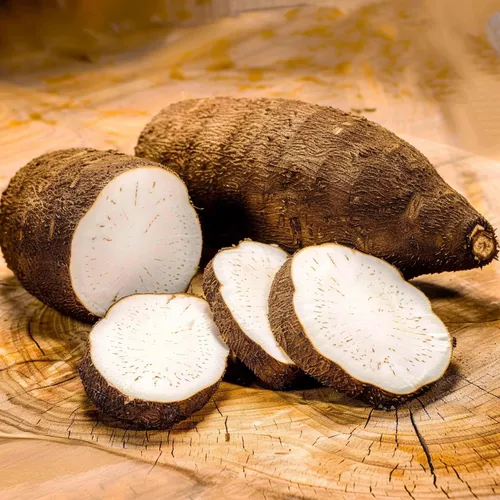If you’re thinking about conceiving and the idea of having twins is not something you’re ready to think about, perhaps you should think twice before you eat a lot of yams.
Really? Is there actually a connection between eating yams and having twins?
Did you know that, in a town called Igbo-Ora in Oyo State, they have the world’s highest number of twin births? Patrick Nylander, a British gynaecologist, conducted a study between 1972 and 1982 and recorded between 45 and 50 sets of twins per every 1000 live births. Recent estimates conclude that there is one twin birth out of every 22 births, which is still 4 times higher than anywhere else in the world.
While no one can say for sure why Igbo-Ora has so many twin births, researchers have long believed that their daily diet of yam helps explain these statistics. Apparently yam contain phytoestrogen, a chemical compound that increases a woman’s FSH (Follicle Stimulating Hormone), known for inducing a high rate of ovulation.
Phytoestrogen, linked to hyper-ovulation, is mostly found in the peelings from yam, and this may be the reason why more than one egg is released – typically leading to twin pregnancies. And while we know that yam is a staple food in most Nigerian homes, in the Yoruba people’s diet yam is the central part of their diet. They consume it fried, boiled, pounded, roasted, and they also ground dried yam to make amala.
So, is it possible that yam can be attributed to the high rate of twin births in Igbo-Ora? Surprisingly, there are many scientists who believe this to be true.
Twins: Identical and Fraternal
While a ‘twin’ is 1 of 2 children born from the same pregnancy; ‘twins’ can develop from either one egg or two eggs. Twins who develop from a single egg are called identical twins (or monozygotic) and twins who develop from two eggs are called fraternal twins (or dizygotic) – they have different genomes and are non-identical. Basically, twins are children who were conceived either within the same cycle or on the same day.
So what does this have to do with the yam root?
It’s still not known why a zygote (fertilised egg cell) splits, which is the case with monozygotic twins. However, research and statistics show that when two or more egg cells mature in one cycle, it’s not only genes that cause a woman’s hyper-ovulation; meaning that 2 or more egg cells mature per cycle.
‘Twins’ has always been a fascinating subject, and researchers are becoming more aware of regions in Africa where there is an unusually high occurrence of twin births. When comparing data from 75 developing countries, it becomes obvious that the highest rate of twin births is 27-pairs per 1000 births in Benin, while Nigeria has the second highest rate. While trying to find an explanation for these figures, it was found that the Yoruba people in Ghana, parts of Benin, and south-western Nigeria consume a rich Yam root diet.
Why Yams?
We now know that yams have been used to treat hormonal disorders for centuries, and now with today’s modern biotechnology, they’re also being used to isolate steroid hormones, like progesterone and cortisol. Not only that, the yam root also contains phytoestrogens, which stimulate the secretion of FSH (Follicle Stimulating Hormone).
High levels of FSH were found in women who hyper-ovulate, which led to the speculation of ‘more hormone, more oocytes’.
A Word of Caution
Please note that the connection between yams and twins is just speculation and there’s no scientific evidence that shows consuming yam leads to twin pregnancies. Even if this could be proved, large amounts of yam would have to be consumed over a long period of time.
What Other Foods Are Linked to Twins?
While the connection between yams and twin pregnancies remains unproven, some cultures have long believed that certain foods can increase chances of conceiving twins. Let’s explore a few of these “twin traditions”:
Dairy Products
In parts of the United States, many believe that consuming dairy products like milk, cheese, and ice cream can boost odds of having twins. The theory stems from dairy’s fertility-enhancing nutrients like calcium, protein, and fortified vitamin D. However, most experts dismiss any direct link between dairy and twinning.
Anise Tea
For centuries, Greek mothers have sipped anise tea, believing it increases chances of twin births. While the scientific basis is unclear, this herbal tea does contain anethole, a mild phytoestrogen that could theoretically influence ovulation. Of course, consuming massive quantities would likely be required to trigger hyper-ovulation.
Okra (Lady’s Fingers)
In some parts of India and the Middle East, many believe eating okra or “lady’s fingers” leads to twin pregnancies. The vegetable’s shape and fertility-booster reputation may be behind this folktale. However, no studies support okra having any tangible impact on twinning rates.
Cassava
Like the yam theory, the Yoruba people of Nigeria attribute their high rates of twinning to a diet rich in cassava, a starchy tuberous root. Cassava contains phytoestrogens but considerably less than yams. More research would be needed to evaluate any potential link.
So Can Diet Really Influence Twinning?
Most reproductive experts agree there’s little scientific proof that specific foods directly cause twins. However, diet can potentially impact fertility and ovulation in general ways:
- Maintaining a healthy weight and body mass index
- Getting sufficient protein, iron, zinc, and other fertility nutrients
- Avoiding excessive caffeine, alcohol, and smoking
Ultimately, conceiving twins comes down to genetics, age, race, use of fertility treatments, and pure chance. But eating a varied, nutrient-dense diet can only benefit your overall reproductive health!
Are Yams Safe for Women Trying to Conceive
Yes, if you enjoy them there’s no reason why yam roots shouldn’t be included in your diet. It is recommended, however, that you only consume yams and sweet potatoes during the first half of your menstrual cycle. More importantly, if you’re trying to conceive, make sure you enjoy a nutrient rich and balanced diet.
Photo credit; “Yams The Best!” by Anthony Cunningham for Zoom Baby
Zoom Baby is a leading supplier of Pregnancy Tests and Ovulation Test Kits





